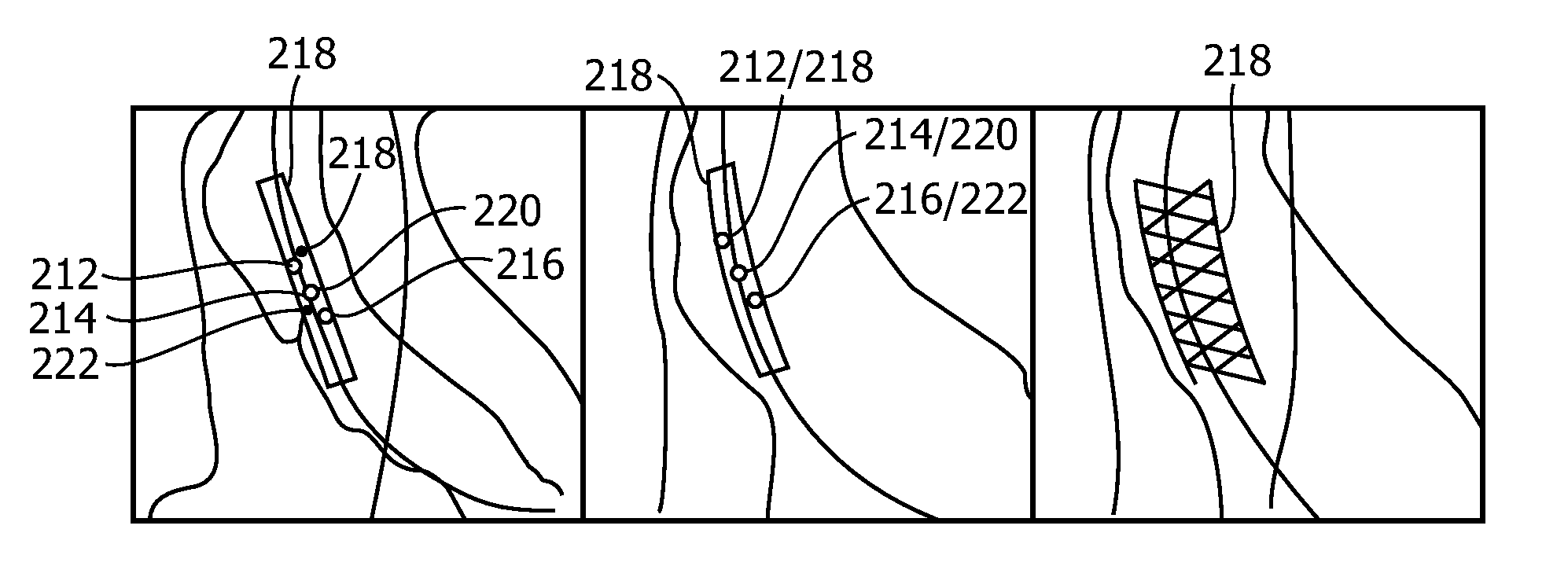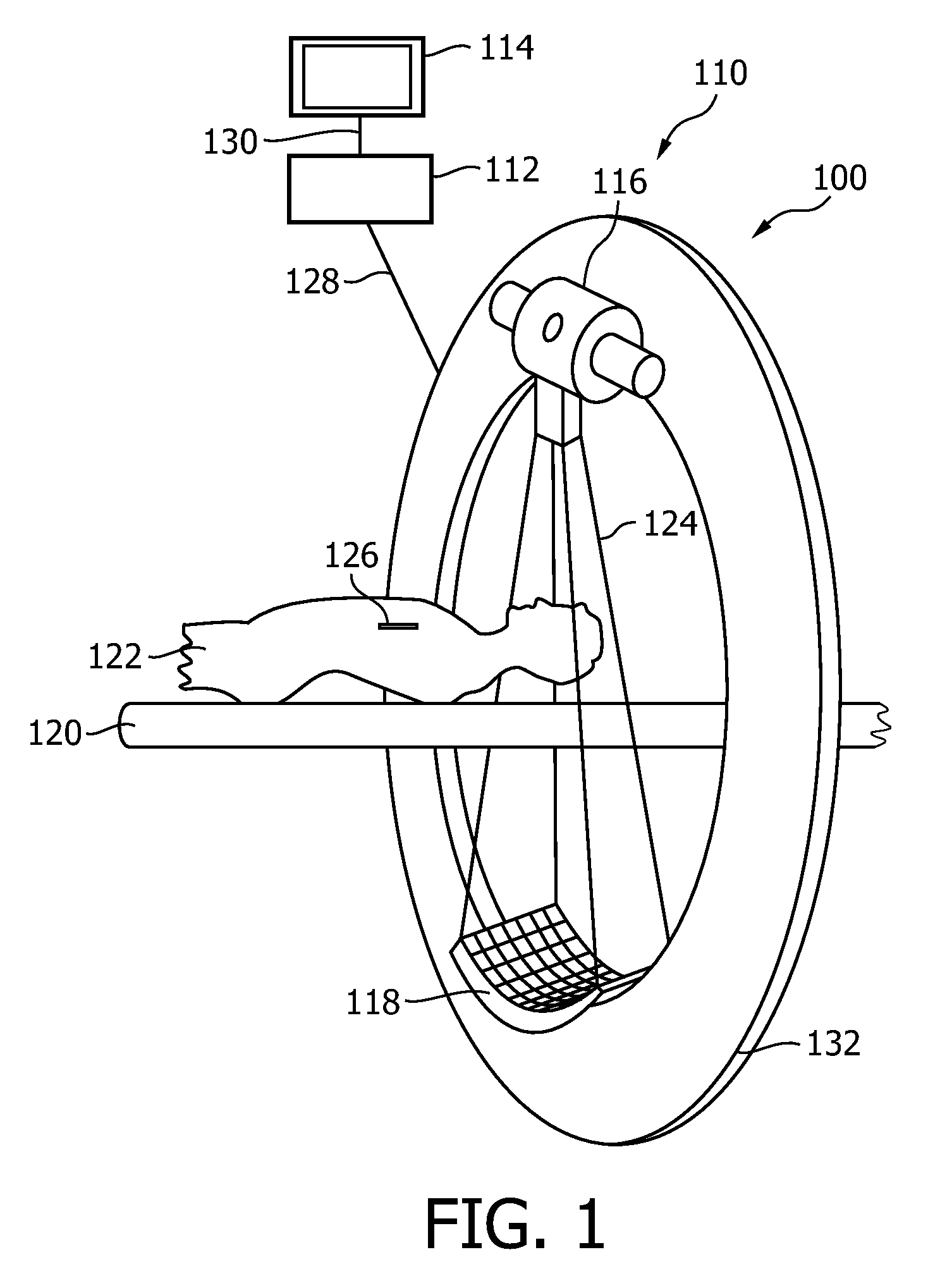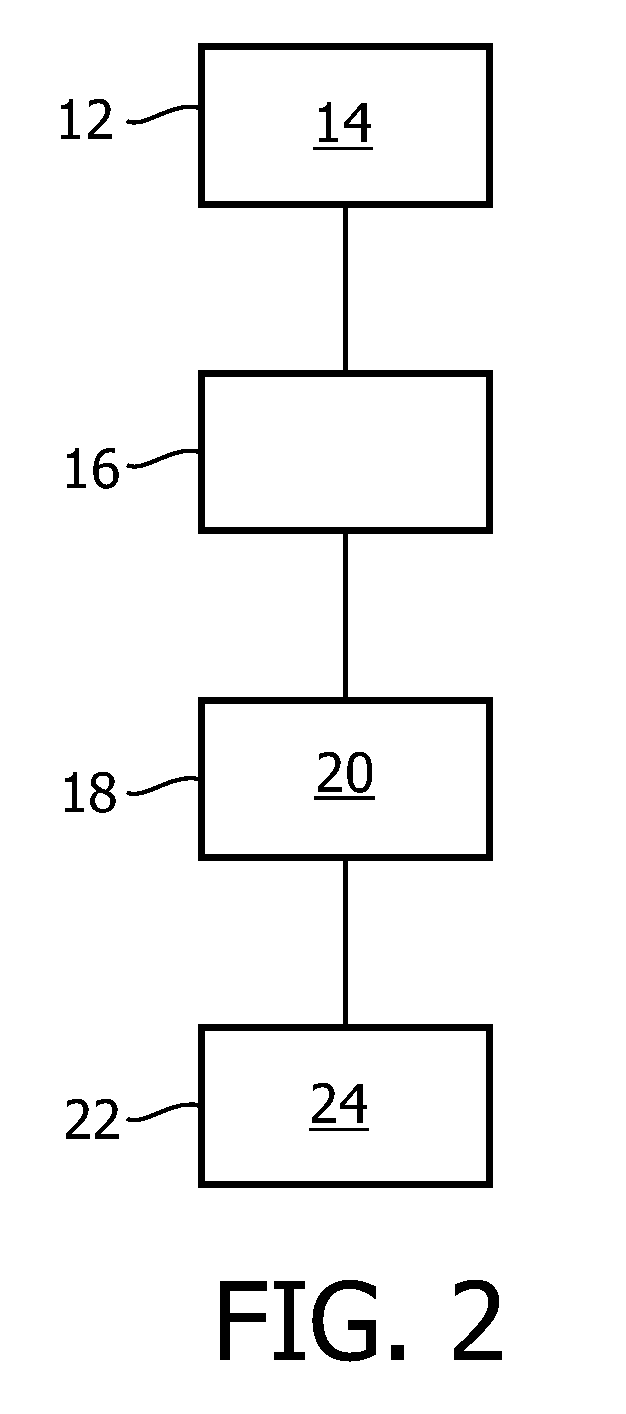Determining the specific orientation of an object
a specific orientation and object technology, applied in the field of determining the specific orientation of objects, can solve the problem that the marker does not necessarily give straight forward information about the actual positioning of the object to the user, and achieve the effect of facilitating the user's understanding of the actual spatial situation and estimating the necessary movement steps
- Summary
- Abstract
- Description
- Claims
- Application Information
AI Technical Summary
Benefits of technology
Problems solved by technology
Method used
Image
Examples
Embodiment Construction
[0031]In FIG. 1, a medical imaging system 100 is shown, the system comprising image acquisition means 110, a data processing unit 112, and a display 114. The acquisition means 110 comprise an X-ray source 116 and a detector arrangement 118. Further, a table 120 is provided on which an object of interest, for example a patient 122, can be arranged. For the acquisition by the acquisition means 110, the patient 122 on the table 120 can be arranged between the X-ray source 116 and the detector arrangement 118 such that X-rays 124 radiating from the X-ray source towards the detector arrangement 118 pass a region of interest of the patient 122.
[0032]Further, an object 126 is shown provided with at least three markers visible in a 2D image acquired by the acquisition means 110. It must be noted that the markers are not shown in FIG. 1. The acquisition means 110 are adapted to acquire 2D image data of an object, for example the object 126 with three markers. In the exemplary embodiment show...
PUM
 Login to View More
Login to View More Abstract
Description
Claims
Application Information
 Login to View More
Login to View More - R&D
- Intellectual Property
- Life Sciences
- Materials
- Tech Scout
- Unparalleled Data Quality
- Higher Quality Content
- 60% Fewer Hallucinations
Browse by: Latest US Patents, China's latest patents, Technical Efficacy Thesaurus, Application Domain, Technology Topic, Popular Technical Reports.
© 2025 PatSnap. All rights reserved.Legal|Privacy policy|Modern Slavery Act Transparency Statement|Sitemap|About US| Contact US: help@patsnap.com



